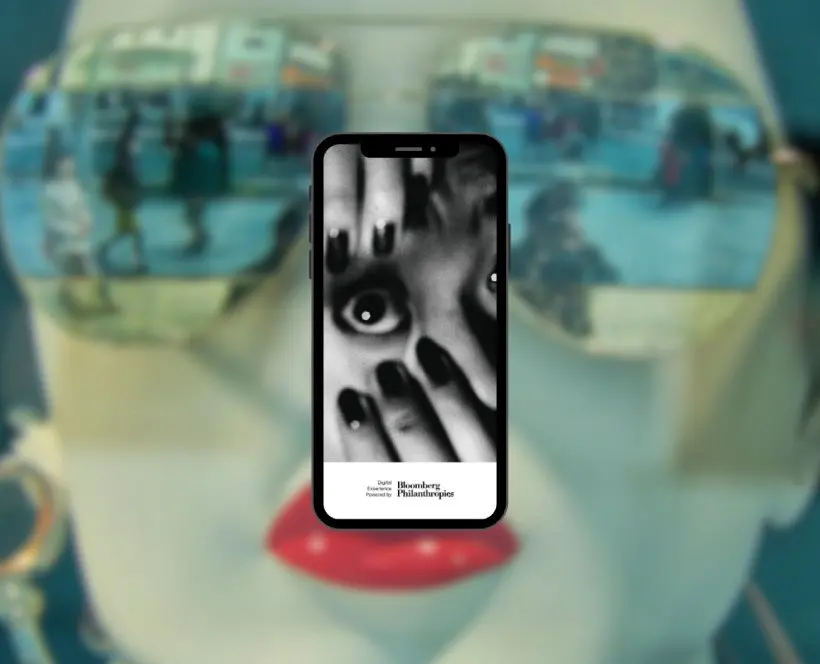Learn more with our digital guide
Hear more about Provoke, and Moriyama's style directly from the curator of the exhibition, Thyago Nogueira, in our free digital guide on the Bloomberg Connects app.
Access the guideDaido Moriyama (b. 1938, Japan), a pioneering figure in the world of photography, has left an indelible mark with his distinctive style often referred to in Japanese as 'are, bure, boke' - or 'grainy, blurry, out of focus'. This approach is often associated with the Provoke era, related to the short-lived but influential Provoke magazine produced in late 1960s Japan.
In this guide we explore Moriyama’s unique photographic style which challenged the conventional notion of photography.
Before we delve deeper, let's break down what 'are, bure, boke' means:
1. 'Are' (Grainy)
This term refers to the presence of visible grain or 'noise' in photographs. Instead of striving for the pristine clarity and fine grain of film often associated with traditional photography, Moriyama embraces the texture and imperfections created by grain. Grain is the visible texture created through the random arrangement of silver halide crystals on photographic film which can be fine or coarse.
2. 'Bure' (Blurry)
Embracing blur as an artistic choice, Moriyama's work often features subjects that are intentionally out of focus. This blurriness adds a dreamlike quality to his images, encouraging viewers to engage more with the emotions and atmosphere of a scene rather than just its details. Blur in photography can occur for different reasons, for example moving the camera when making an exposure or photographing something fast moving at a slower shutter speed.
3. 'Boke' (Out of focus)
'Boke' takes the intentional blurriness a step further. This technique can create a sense of mystery and intrigue, inviting viewers to interpret the image in their own unique ways. To photograph something out of focus, a photographer can be selective with what is in focus by changing the ‘depth of field’ or they can shoot entirely out of focus by choosing no focal point at all.
Daido Moriyama embarked on a photographic journey that would challenge the norms and redefine the very nature of photography. Influenced by American artists like Andy Warhol and William Klein, he developed a style that was daring, unconventional, and ultimately ground breaking. Today he is considered one of the greatest ‘are, bure, boke’ photographers. Others who worked in this style include Yutaka Takanashi and Takuma Nakahira.
My approach is very simple—there is no artistry, I just shoot freely... My photos are often out of focus, rough, streaky, warped etc. But if you think about it, a normal human being will in one day receive an infinite number of images, and some are focused upon, other are barely seen out of the corners of one’s eye.
Daido Moriyama
Moriyama's choice of 'are, bure, boke' wasn't accidental – it was a deliberate departure from the polished and pristine photography of the time. He wanted to push the boundaries of what photography could convey, opting for a raw and unfiltered approach that showcased the essence of a moment rather than its perfection.
Daido Moriyama: A Retrospective is now showing until 11 February 2024 at The Photographers' Gallery. This first UK retrospective of Moriyama’s work allows you to witness the evolution of an artist who dared to question the status quo, experimenting with grain, blur, and focus to create images that challenge and inspire.
Explore the depth and breadth of Moriyama's career, from his early works in Japanese magazines to his groundbreaking contributions to the Provoke era, and colour photography. It's a chance to see firsthand how 'are, bure, boke' became more than just a style – it became a philosophy, a way of seeing the world differently.
Hear more about Provoke, and Moriyama's style directly from the curator of the exhibition, Thyago Nogueira, in our free digital guide on the Bloomberg Connects app.
Access the guide